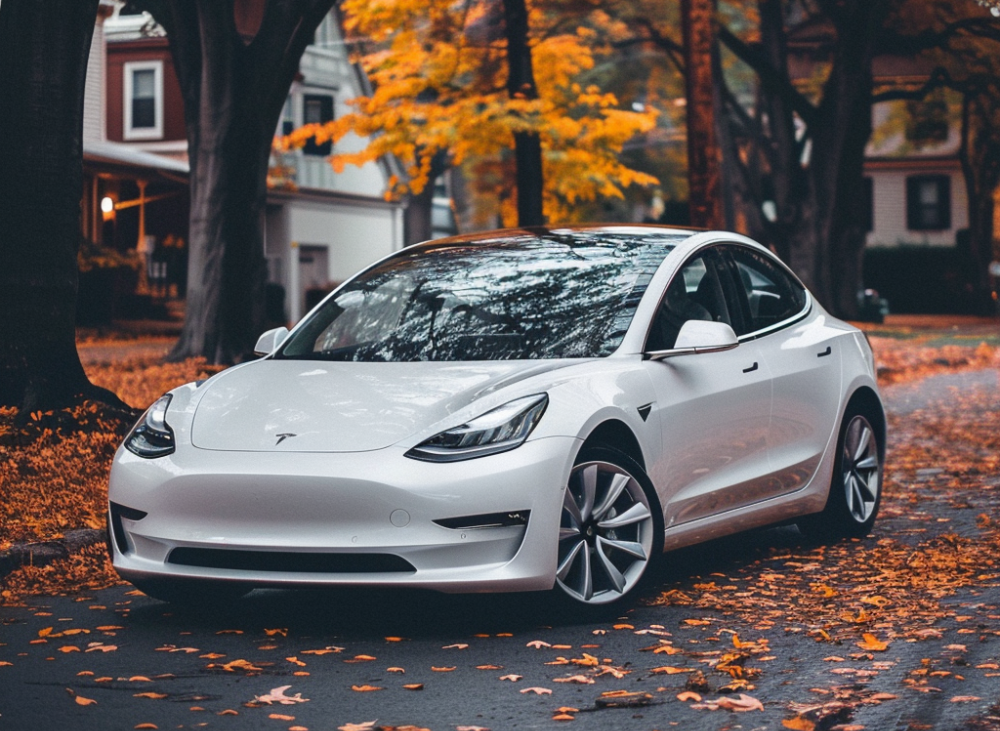Tesla has transformed the industry. That is no question! Tesla self drive car features are breakthrough innovations that lead to a completely new travelling experience for passengers.
Imagine sliding into the driver’s seat, but instead of taking the wheel in the traditional sense, you’re prepping for a journey where the car itself riding the road just as the KITT in our favorite childhood series Knight Rider. This is the reality that Tesla’s self-driving features offer today. Tesla’s rise in the automotive industry isn’t just only because of its electric powertrains; it’s also due to its pioneering self-drive technology. This section outlines the key aspects of Tesla’s Autopilot and Full Self-Driving suite that rank high not only in innovation but also in transforming our driving experience.

We shall understand the distinction between Autopilot and Full Self-Driving capabilities. Autopilot is a more accessible technology that provides assistance with steering, braking, and speed, working as an advanced driver-assistance system. Full Self-Driving or FSD, on the other hand, is designed to offer a fully automated driving experience, albeit still has to be monitored by the driver.
Currently, self-drive modes in Tesla vehicles certainly impress, but they do have restrictions. The features available impact highway navigation, negotiate traffic, and even suggest lane changes, yet they’re not a replacement for an attentive driver.
Why is this relevant? As Tesla’s technology evolves, the way we think about driving is revolutionizing. Driver assistance features are leaping towards autonomous driving, shaping a future where commutes could be safer and more efficient. This leap towards the future sets a stage for further insight into the remarkable technology driving the change: Tesla’s self-drive system software. I will give some information about Tesla’s sophisticated algorithms and computational excellence that not only empower these features but also hint at a future where cars may indeed drive themselves with precision and reliability.
The Brains Behind the Wheel: Tesla’s Self-Drive System Software
Tesla’s self-driving cars are marvels of engineering. Besides that, they’re also powerhouses of computational intelligence. At the core of this intelligence is the software that makes split-second decisions while navigating complex traffic scenarios. It’s this sophisticated architecture that we’ll unpack in this section.
The software isn’t just a set of pre-programmed instructions. Rather, it’s a complex system that uses machine learning and neural networks to interpret sensory information, predict the actions of other road users, and make driving decisions. This approach allows the system to improve over time, learning from each mile driven.
Safety is paramount, and Tesla’s approach to software development reflects this. Through over-the-air updates, Tesla can roll out enhancements quickly and efficiently, often in response to feedback from the cars’ performance in the real world. This ensures that your Tesla keeps getting smarter and safer with every update.
In a world increasingly concerned about digital security, Tesla takes data privacy and cybersecurity seriously. With high-profile hacks making headlines, Tesla’s commitment to protecting the data gathered by its self-drive system helps maintain trust and uphold the integrity of their sophisticated software.
Tesla’s self-drive system software is integral to its vision of future mobility. But this software would be little more than an abstract idea without the tangible components it controls. Next, we’re going to look at the equally important hardware side of the equation.

The Hardware That Drives the Future: Tesla’s Self-Drive System Components
Under the sleek exteriors of Tesla’s vehicles lies an intricate network of hardware specifically designed to enable self-driving capabilities. I’ll break down the critical components that give Teslas their ability to navigate autonomously, maintain safety, and provide convenience.
The heart of Tesla’s hardware suite is their proprietary chips. These chips, developed in-house, are the brains of the operation, processing vast amounts of data at lightning speeds.
Tesla’s vehicles are equipped with a comprehensive sensor array, consisting of cameras, radars, and ultrasonic sensors. Each of these sensors plays a vital role in perceiving the car’s surroundings, contributing to the vehicle’s ability to make split-second decisions.
Safety is paramount in self-driving technology. That’s why Tesla’s hardware includes various redundancies, to ensure functionality even in the unlikely event of a component failure. From duplicate power sources to backup computing modules, Tesla cars are prepared for contingencies.
As we approach the next section, it’s clear that Tesla’s blend of advanced hardware and sophisticated software sets the stage for extraordinary possibilities with their self-drive mode, fundamentally redefining our experience on the road.
Living with Autonomy: The Day-to-Day Possibilities of Self-Drive Mode
Imagine starting your day not with the usual focus on the road, but with a calm cup of coffee as your car seamlessly navigates the morning traffic. Tesla’s self-drive mode isn’t just about technology; it’s about redefining our relationship with driving. The perks of navigational autonomy are immense, particularly the reshaping of daily commutes. Instead of being solely focused on the road, drivers can now stay alert but more relaxed as the car handles the nuances of traffic.
Integrated features like Autopark and Summon, where a Tesla can park itself or come to you from its parking spot, have turned tedious tasks into conveniences. These functionalities are not just showpieces – they signify a pivotal shift in automotive interaction. As Tesla refines these features, we can expect even more sophisticated conveniences that are practical and simple to use.
Tesla’s ongoing improvements and updates promise to deliver even more impressive advances in the near future. These changes will continue to push the boundaries of what we expect from our vehicles, inching closer to a reality where cars are not just modes of transit but partners in our everyday lives.
As we embrace this new era of transportation, it’s also vital to reflect on the broader impacts. How will self-driving cars shape our cities? What ethical frameworks should guide their development? These aren’t just theoretical musings; they’re questions that will affect us all. Tesla’s technological strides are remarkable but they come paired with a responsibility to navigate the unfolding landscape with wisdom and careful consideration for the societal ripple effects.

